
Asaccus is a genus of geckos, commonly known as Southwest Asian leaf-toed geckos, in the family Phyllodactylidae.
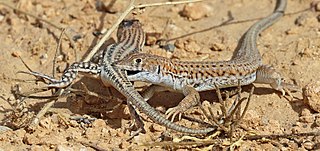
Acanthodactylus is a genus of lacertid lizards, commonly referred to as fringe-fingered lizards, fringe-toed lizards, and spiny-toed lizards.

Eremias is a genus of lizards in the family Lacertidae, the wall lizards. They are native to Asia and southeastern Europe, where they live in desert and steppe regions.
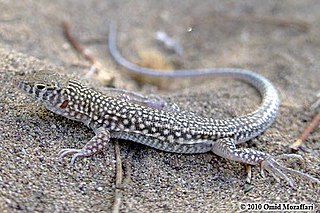
Acanthodactylus blanfordii, commonly called Blanford's fringe-fingered lizard, is a species of lizard in the family Lacertidae. The species is endemic to the Middle East and India.

Neurergus microspilotus, the Kurdistan newt, is a species of salamander in the family Salamandridae found in areas of Iran, possibly Iraq, and possibly Turkey. Its natural habitats are subtropical or tropical dry shrubland and rivers.

The Persian brook salamander or Persian mountain salamander is a species of salamander in the family Hynobiidae found in Iran and possibly Azerbaijan. Its natural habitats are rivers, inland karsts, and caves. It is threatened by habitat loss.
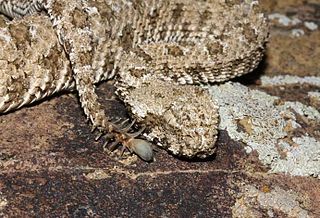
The spider-tailed horned viper and known as persian horned viper is a species of viper, a venomous snake in the family Viperidae. The species is endemic to western Iran, and was originally described in 2006. The head looks very similar to that of other Pseudocerastes species in the region, but the spider-tailed horned viper has a unique tail that has a bulb-like end that is bordered by long drooping scales that give it the appearance of a spider. The tail tip is waved around and used to lure insectivorous birds to within striking range.
Acanthodactylus felicis, also known commonly as the cat fringe-fingered lizard or the South Arabian fringe-toed lizard, is a species of lizard in the family Lacertidae. The species is endemic to the Arabian Peninsula.

Acanthodactylus grandis, commonly called the giant fringe-fingered lizard, is a species of lizard in the family Lacertidae. The species is endemic to Western Asia.
Acanthodactylus micropholis, known commonly as the Persian fringe-toed lizard and the yellowtail fringe-fingered lizard, is a species of lizard in the family Lacertidae. The species is endemic to Asia.
Acanthodactylus nilsoni, commonly called Nilson's spiny-toed lizard, is a species of lizard in the family Lacertidae. The species is endemic to Iran.
Microgecko is a genus of geckos, lizards in the family Gekkonidae. The genus is endemic to Asia.
Apathya yassujica, the Yassujian lizard, is a species of lizard endemic to Iran.
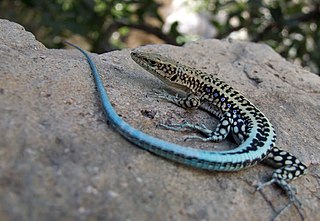
Apathya is a genus of lizards of the family Lacertidae.

The Anatolian lizard is a species of lizard endemic to Iran, Iraq, Syria and Turkey.

Eremias persica, the Aralo-Caspian racerunner or Persian racerunner, is a species of lizard native to southern Azerbaijan, most of Iran, southern Turkmenistan, Afghanistan, and western Pakistan. Eremias intermedia is also known as the Aralo-Caspian racerunner.
Iranolacerta is a genus of wall lizards of the family Lacertidae.
Iranolacerta brandtii, also known as Brandt's Persian lizard, is a species of lizard found in Iran, Azerbaijan, and Turkey. It is named for Johann Friedrich von Brandt, a German zoologist, surgeon, pharmacologist, and botanist.
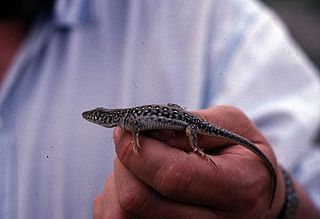
Eremias strauchi, commonly known as Strauch's racerunner, is a species of lizard in the family Lacertidae. The species is native to Western Asia. There are no subspecies that are recognized as being valid.

Darevskia raddei, known commonly as the Azerbaijan lizard, is a species of lizard in the family Lacertidae. The species is endemic to Eurasia. There are four subspecies.











